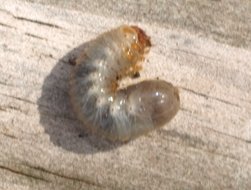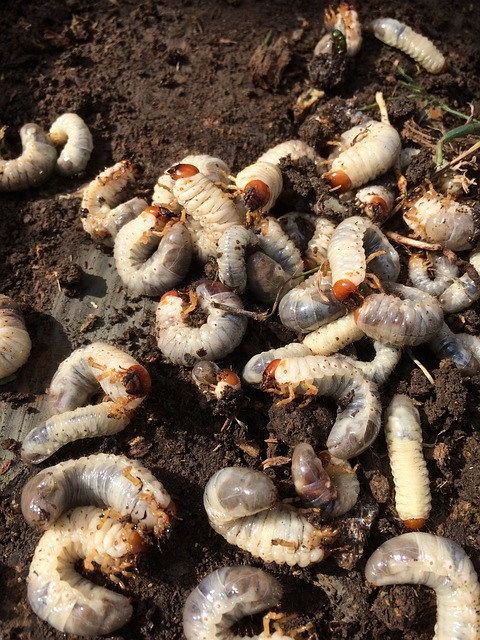Introduction to Turf Pests
Your lawn represents a significant investment in both time and money. Turf pests, such as insects or small animals, can quickly damage or ruin a lawn. Your greatest defense against these pests is knowledge. When you know how to look for them and identify their signs and symptoms, you can stop them before any real damage occurs.
Many common turf pests, such as moles, are some of the most frustrating to deal with. The pages below will offer advice and suggest ways to solve the problems. We will also examine homemade cures if any exist for that particular pest.
Quick Overview of Turf Pests
Insects are an important part of nature and are found in almost every square inch of earth. No matter how we feel about them, life on earth would suffer if they were not here.
However, even a good thing that is out of place can prove disastrous. Termites, for example, provide a valuable service in the forest, but they cannot be allowed to do the same thing to our homes. Ground wasps feed on small insects, but must be destroyed when the nest is a danger to children or pets. It is no different for our lawns. Since we have an investment in our lawns, we need to protect it from damaging turf pests.
How to Determine Whether an Insect Needs to be Controlled
Lawn insects are classified as either:
- Beneficial insects
- Nuisance insects
- Damaging insects
Beneficial insects are those that provide a needed service. Bees pollinate plants and spiders help keep other insects under control. These are just a couple examples.
Nuisance insects are usually more of a problem for us than they are for the grass. They include ants, spiders, adult green June bugs, wasps and hornets, etc. In most cases, little or nothing needs to be done about nuisance insects unless their presence becomes an annoyance or a danger to us, to our children, or pets.
Turf damaging insects are those that feed on the grass blades, stems, or roots and can harm your grass.
These include leafhoppers, chinch bugs, billbugs, grubs, etc. Moles are not insects, but can harm the grass through tunnel digging.
Generally they are not a danger to us, just the grass. However, just because a lawn-damaging insect is found does not necessitate treatment. Healthy grass is easily able to withstand insect pressure within certain limits. It is only when they exceed the threshold that treatment may become necessary.
Preventative insecticides do not always work when damage is already seen. They are used and applied before damage occurs and kills the insect while in a developing growth stage before it has time to do damage.
Curative insecticides are quick kill remedies that immediately kills the insects that are actively causing damage.
Relating Insects to Turf Damage
Insects That Feed Below Ground on Plant Roots

Most of the insects that damage the grass roots and crown are the larval stage of certain beetles and moths.
This also means there is a narrower window of opportunity to control the insects. Turf damage doesn't usually occur until the last stages of larval growth. Examples are white grubs, cutworms, and army worms.
Fortunately, we know when the damage is likely to occur, so that is important for good control.
Insects That Feed Above Ground on the stems and Blades
Insects that feed on plant juices are referred to as sucking insects. Aphids, leafhoppers, chinch bugs and mites can cause considerable damage especially to stressed or young plants. Some sucking insects can spread diseases to plants as well.
Since sucking insects live on plant juices, over-fertilized, nitrogen rich lawns will often receive the most damage. Some insects are capable of spreading diseases to the grass.
Old Insecticides Vs. New Insecticides
How Old Insecticides Worked
In years past, insecticides were much different than they are now. Popular insecticides like chloradane, heptachlor and others were commonly used to kill tree insects or turf pests. They had a very broad spectrum and a long persistence.
The term "broad spectrum" means they controlled a wide variety of turf pests and "long persistence" means it remained active for long periods.
One application would last all season and quite often would last well into the second season. Due to the long persistence, a person didn’t need much knowledge of insect growth stages or behavior. The insecticide was going to kill the insect sooner or later. Although effective, the long persistence became a concern and by 1980 almost all were off the market.
Now, The New Insecticides
Newer insecticides are developed to be active for much shorter periods. Most will remain active for just a few days while a few others are persistent considerably longer. They also have a narrower spectrum. This can have a significant outcome, especially if we misidentify the damage or the tree or turf pests.
More attention and research has been given to biological controls. These are often insect specific and must be applied well in advance of any turf damage.
What These New Insecticides Mean For Us?
With newer insecticides, controlling turf pests means we must be more accurate at identifying the insect damage. If we are using a preventative insecticide before any damage occurs, we need to know when to apply it for best results. We also need to know what is the best product to use.
This section will show you how to identify problem insects and methods of control. It doesn’t matter if you are a golf course superintendent or a homeowner, the methods are the same and knowledge is the real key.
All About Lawn Grubs
There are several species of grubs that can damage turf. Click here for detailed descriptions of their life cycles, the damage they cause and how to control them.
Getting Rid of Fleas from Lawn and House
Although fleas are not a danger to your lawn, they can be extremely frustrating to your pets and family. Infestations can occur when fleas are out of control or when control methods are inadequate. Click here for complete information for getting rid of fleas.
Cat and Dog Flea Medications that Work
Applying flea and tick medicine on your pet is the first step in preventing an infestation. Click here to see what some of the best products are and how they are used.
Red Imported Fire Ants
These dangerous ants are found throughout the southern U.S. and will fiercely defend their nests whenever it is disturbed. To the unwary person, dozens of painful stings can occur within seconds. Learn valuable information about these insects and the methods used to control them.
Lawn Moles and Voles
Moles can be very frustrating to deal with. Some people learn to live with them, but you don't have to. Knowledge is the key to getting rid of moles.
Bald Faced Hornets Fact Sheet
Bald faced hornets, distinguished by their large round or oval nests, have a fierce reputation. They will defend their nest with multiple stings. Learn how to safely removing a nest along with professional tricks of the trade.
Turf Pests back to Lawn Care Academy Home




